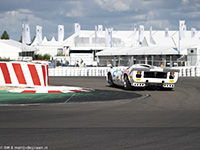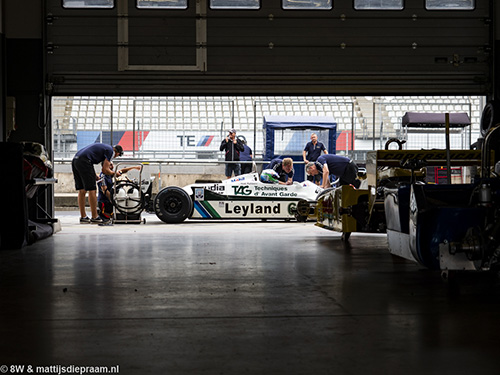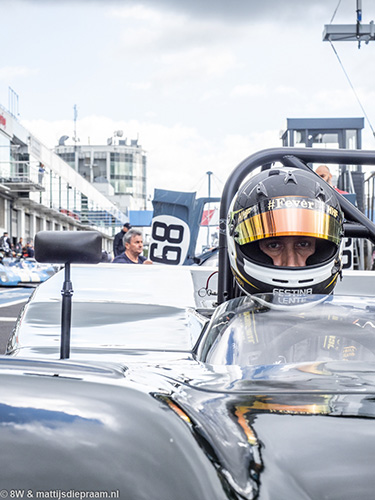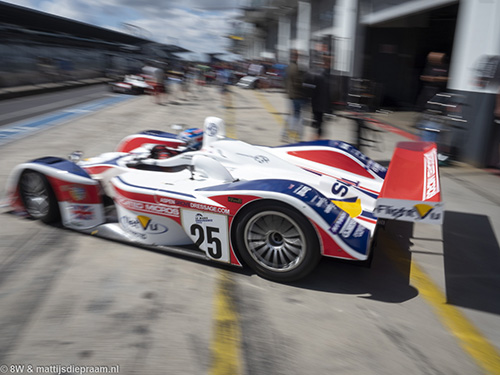2018 Oldtimer Grand Prix report
Hadfield’s double whammy
Author
- Mattijs Diepraam
Date
- August 18, 2018
Related articles
- Hockenheim - Upping the ante, 2023 Bosch Hockenheim Historic report, by Mattijs Diepraam
- Hockenheim - The purity of history, 2023 ADAC Hockenheim Historic report, by Mattijs Diepraam
- Nürburgring - Smaller can be a good thing too, 2016 Oldtimer Grand Prix report, by Mattijs Diepraam
- Nürburgring - Rain masters at the ‘Ring, 2017 Oldtimer Grand Prix report, by Mattijs Diepraam
- Nürburgring - Double winners take the spoils, 2019 Oldtimer Grand Prix report, by Mattijs Diepraam
- Nürburgring - Some like it hot, 2022 Oldtimer Grand Prix report, by Mattijs Diepraam
- Nürburgring - All-weather performance, 2025 Oldtimer Grand Prix report, by Mattijs Diepraam
Who?Leo Voyazides/Simon Hadfield What?Lola-Chevrolet T70 Mk3B Where?Nürburgring When?2018 Oldtimer Grand Prix (August 11, 2018) |
 |
Why?
Simon Hadfield was the undoubted star of the 46th running of the Oldtimer Grand Prix, the driver/prepaper taking two wins home along with his Greek co-pilot Leo Voyazides. Their FIA Masters Historic Sports Car win was a fairly straightforward pole-to-flag win but Hadfield’s final laps of the Masters Gentlemen Drivers race was the stuff of legends. The German fans meanwhile enjoyed the numerous local series celebrating the country’s famous DRM, DTM and Super Touring past.
Once again, the Oldtimer Grand Prix was held in a pleasant atmosphere, with spectator-filled paddocks, in no less amount helped by the influx of the many national car clubs and fine non-Eifel weather throughout. Still the event seems to be in decline, as witnessed by the addition of two modern grids to bolster the programme – and it’s hard to tell why. The Oldtimer Grand Prix has always been a mid-August event, so it can’t be the timing. The track has been the same since 1985, and the organisation has been faultless for several years now. So it must be something else – but what?

Nick Padmore is ready to go out in his Williams FW07C, helped by his Forza Historic crew. (photo 8W)
And it wasn’t the racing either. The two FIA Masters Historic Formula One races for once weren’t a Nick Padmore walkover, the crowd treated to a tense opening half in the first race, in which Padmore’s Williams FW07C was hunted down by Martin Stretton’s Tyrrell 012, only for the Tyrrell to pick up a vibration and tail off. In the second race, though, Stretton worked his way up to the front from the reversed top-eight grid, with Christophe d’Ansembourg’s FW07C in his wake, but for ten laps a gripless Padmore got stuck behind Joaquin Folch’s Brabham BT49. For the remainder of the race, he was given the same treatment by Ansembourg. So like at Brands Hatch, Padmore and Stretton shared the wins.
Both pre-78 wins were taken by Padmore’s team mate Max Smith-Hilliard but the Fittipaldi F5A driver was handed both of them when the March 761 in front of him broke down. In the first race, Henry Fletcher’s example coasted to a halt with two laps to go, his oil pressure suddenly having dropped. In the second race, Greg Thornton – still in Katsu Kubota’s 761 – had worked his way past early leader Smith-Hilliard only to be forced to retire two laps later.

Henry Fletcher was in the wars after knocking Max Smith-Hilliard's similar Chevron B19 out of the FIA Masters Historic Sports Car race. (photo 8W)
The piece de resistance of the event, however, was the Masters Gentlemen Drivers race that for 22 laps looked like a shoo-in for the Michael Gans/Andy Wolfe AC Cobra. But when the safety car was deployed to allow Joel Wykeham’s stricken Shelby Mustang GT350 to be removed from a dangerous position, the similar Cobra of Leo Voyazides/Simon Hadfield was back into play all of a sudden. In one lap, Hadfield dealt with the two Elans still leading him – quick Dane Nicolai Kjaergaard on his way to repeating last year’s class win by beating the no less quick Rob Fenn – and then he set after Wolfe, who was a further four seconds up the road. In four laps, including two with a new fastest lap of the race, Hadfield had reached the tail of the dark-green Cobra, and on the last lap was pushing to get past. Wolfe cunningly defended, though, with every legal trick in the book. About to unleash his superpowers, Hadfield wasn’t to be undone, though. As the two thundered towards the chicane for the final time, Wolfe covered the inside, leaving Hadfield no option but to go around the outside. Braking later than late the black Cobra was already passed on the entry of the chicane, but now came the matter of making the corner. Tethering on the brink of adhesion, Hadfield’s Cobra ultimately achieved to make the necessary direction change, even though its right-hand side fully clipped the inside kerb. Its inspired driver then defended into the final corner and ran across the line in first. Hadfield was rightfully beaming afterwards, while Wolfe was angry about messing up his safety-car restart. The two shook hands as gentlemen, showing that the best of professionals in historic motor racing can compete at the death and still not be angry with each other afterwards.
The Voyazides/Hadfield win in FIA Masters Historic Sports Car was less spectacular, Voyazides starting from pole and keeping Michael Gans behind for eight laps to stay close to the American until the pitstops – after which slicker pitwork helped Hadfield jump Gans on his outlap before opening up a ten-second gap towards the finish.

Mike Newton's MG-Lola EX257 failed to finish Sunday's Masters Endurance Legends race. (photo 8W)
In the fourth and final Masters grid of the event, Steve Tandy (Lola-Mazda B12/60) and Christophe d’Ansembourg (Lola-Aston Martin DBR1-2) shared the wins. The two fought hard in their opening stints of the first race but the Lola-Aston lost sight of the Lola-Mazda when d’Ansembourg’s team mate Hervé Regout was hampered by gear-selection issues on leaving the pits. On Sunday, though, d’Ansembourg used the stops to pip Tandy to the win, and hand his Gulf-liveried Lola its first win in the series.
Apart from Voyazides and Hadfield, there were many more double winners on the weekend. Peter Horsman (Lotus 18/21) twice beat Will Nuthall (Cooper T53) in both Historic Grand Prix Car Association races, first by catching and passing Nuthall with two laps to, and then on Sunday battled his nemesis again before the Cooper T53 was out of the race. In the FIA Lurani Trophy, Mark Shaw (Brabham BT6) had to drive in equally combative fashion to fend off reigning champion Bruno Weibel’s challenge in the Swiss’ Lotus 22. Peter Mücke, however, was totally dominant in both races of the DRM Revival, his Ford Zakspeed Capri proving easily the better of Thomas Kammermann’s BMW M1 on two occasions, with Kammermann in the second race having to give his all to win a photofinish across the line from Urs Beck’s Porsche 935 K3.

Jägermeister. BMW. Group 5. The DRM Revival was a popular feature on the programme. (photo 8W)
The double whammies continued in Formula 3, with Christian Olsen taking both wins in his Martini-Alfa Romeo MK39. He led the second one from lights to flag but on Saturday only took the lead two laps from the end, ousting Thomas Warken’s Ralt-Alfa Romeo RT3/84 from first after the two had inherited the top-two positions from Frédéric Rouviers who retired his Martini-Toyota MK31 having led from the start. A double win was also the result of the two traditional German races for pre-1960-61 sportscars, Ulrich Schumacher/Marco Werner (Maserati Birdcage) winning twice ahead of Michael Gans (Lotus 15).
German wins came in the AvD Tourenwagen & GT Trophäe staged on Saturday morning, and Sunday’s Tourenwagen Classics round. Sebastian Glaser’s Ford Escort RS1600 triumphed in the former after the race was stopped for 20 minutes to clear up an oil track caused by the similar Escort of Glaser’s team mates Heinz Schmersal and Mike Stürsberg. Stefan Rupp’s mighty Alfa Romeo 155 V6 Ti DTM dominated the Tourenwagen Classics, with Alexander Schmidt’s Renault Laguna winning the series’ BTCC/STW section.
